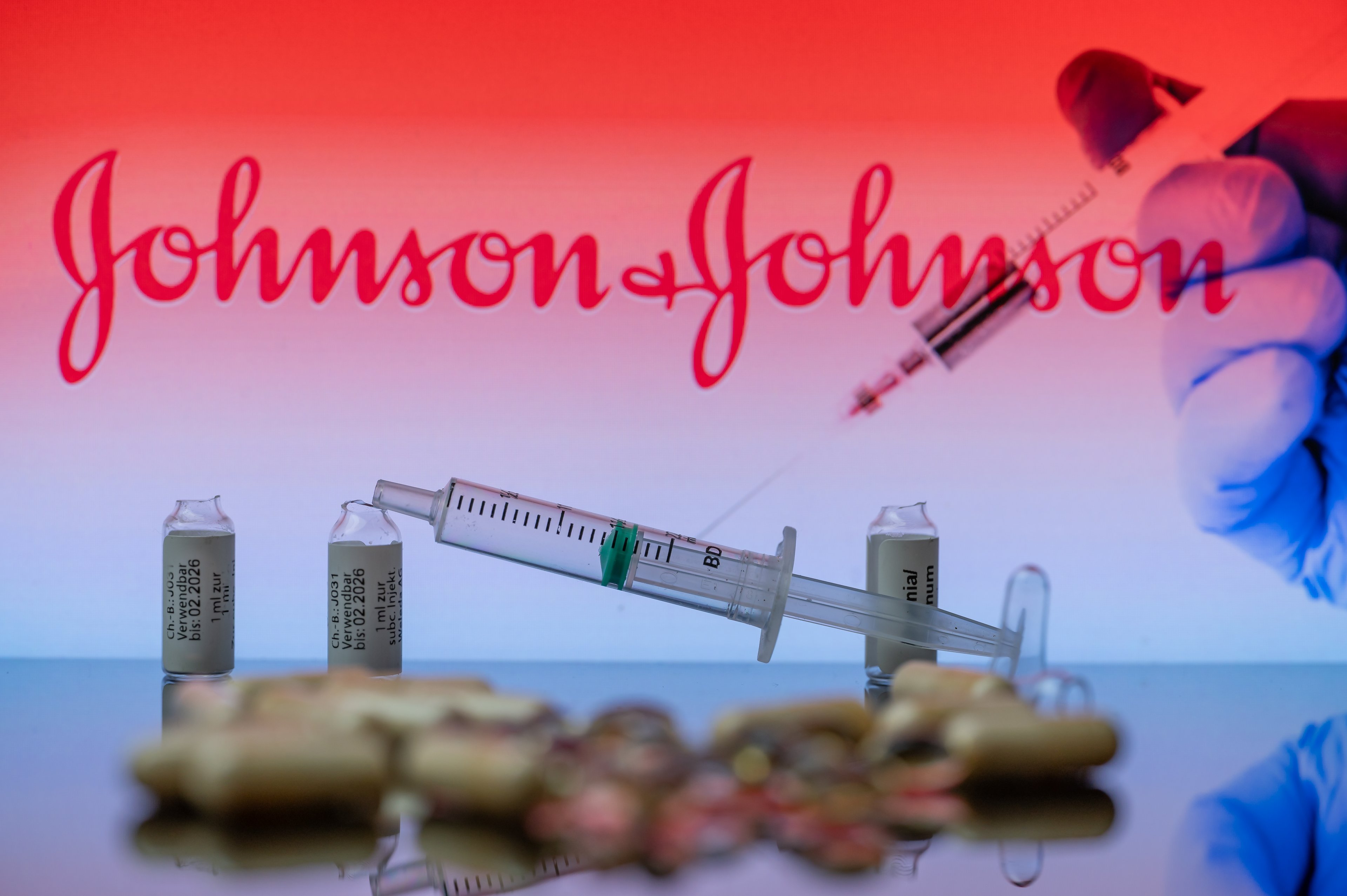Big pharma's full of top stocks, with high-yielding dividends and pipelines brimming with promising drug candidates for the future. But which stocks in this industry are worth your money?
The patent cliff has taken a hammer to many of the biggest names in big pharma recently: From Pfizer to Bristol-Myers Squibb, the largest pharmaceutical corporations have fought to keep a grip on sales while generic drugs chip away at some of the best-selling drugs in recent history. As pharmaceutical companies focus on the best routes for growth, however, which companies are poised for the brightest futures? Let's take a look at three pharma companies -- AbbVie (ABBV 0.31%), Novo Nordisk (NVO +9.12%), and Johnson & Johnson (JNJ 0.41%) -- that could be a big winner for your portfolio in the long term.
Novo Nordisk looks to dominate the global diabetes market
Danish pharma giant Novo Nordisk might offer one of the smaller dividends in the industry, with a mere 1.3% yield, but this stock's been an investor's dream recently. Over the past 10 years, Novo's shares have jumped by a whopping 830%, far outpacing the stock gains from many of the other big names in big pharma.

Novo has made its name by dominating the diabetes field, and in the long run, that specialty could pay off in a huge way for this company. The International Diabetes Federation estimates that 382 million people worldwide suffered from diabetes last year, and projects that number unfortunately to rise to 592 million by 2035.

Source: Wikimedia Commons.
Novo controls 29% of U.S. diabetes treatment market share, but the company's biggest inroad is in China, where it commanded 37% of the overall diabetes market in 2012, and 60% of the insulin market. The company has ramped up its infrastructure and investment in Asia's largest economy for years now. Considering that Bloomberg reports 600 million Chinese citizens are burdened with prediabetes, Novo's China investments look smart for the future of this company's international growth -- particularly as Beijing continues to modernize its healthcare system as more and more Chinese settle in the country's booming urban centers.
It's paid off so far for this company's roaring revenue. In each of the last five years, Novo has managed more than 7% sales growth. The patent cliff is looming, however: The company's NovoLog insulin loses patent protection in the U.S. in 2014, although Novo Nordisk has a formulation patent that stretches through 2017.
Novo has kept up double-digit annual sales growth in the U.S. with fellow diabetes treatment Victoza, and with the company hoping for a 2016 U.S. launch of Tresiba, a long-acting insulin agent previously rejected by the FDA, there's more than enough for Novo Nordisk to get past potential problems from upcoming patent expirations. Tresiba has performed well so far in approved international markets, and if Novo can score regulatory approval for the drug in the U.S., this company will be set to continue maintaining its dominance in fighting the growing diabetes threat for years to come -- along with rewarding shareholders while it's at it.
AbbVie and life beyond Humira
AbbVie doesn't have the history of many of the biggest names in big pharma -- after all, the drugmaker only got its start in 2013 after separating from Abbott Labs. But AbbVie carried with it Humira, the superstar immunology drug that racked up more than $10 billion in revenue last year alone. Even better for investors, Humira has kept on growing at a stellar rate despite its massive sales. The drug recorded overall sales growth of 15% last year, and it's kept up its torrid pace with 22% revenue growth through the first six months of 2014.
While competition for Humira abounds in some of the world's other top drugs, such as Johnson & Johnson's (NYSE: JNJ) star Remicade, the immunology drug market continues to grow. AbbVie loses U.S. patent protection for the drug in 2016, but as a biologic, Humira won't be easily copied -- although generic competitors aren't giving up in vying for a piece of the drug's pie. Still, don't expect Humira's sales to drop off too quickly come 2016.
But the biggest key for long-term investors is that AbbVie is preparing for a long-term future where it won't be so reliant on Humira's revenue, which accounted for more than 62% of overall drug revenue through the first half of this year. The company's unnamed oral hepatitis-C drug candidate warrants the brightest spotlight: AbbVie filed for FDA approval of the drug earlier this year, and gaining the regulatory go-ahead looks like a near-lock at this point. That'll put AbbVie into competition with Gilead Sciences' breakout hep-C star, Sovaldi, which has reeled in nearly $6 billion through the first half of 2014. With debate raging over Sovaldi's pricing, there's a huge opportunity for AbbVie to capitalize in an HCV market that could eclipse $20 billion annually within this decade.
With AbbVie's pipeline boating another eight drug indications in phase 3 trials and the company's acquisition of Shire Pharmaceuticals in hand -- a move that looks to reduce the corporation's tax burden by more than nine percentage points by 2016 -- this big pharma's future looks to build upon Humira's success with even greater gains. It doesn't hurt that AbbVie's stock offers a 3.2% dividend yield, making this stock all the sweeter in the long run for investors.
Johnson & Johnson: An investor's top foundation stock
AbbVie and Novo Nordisk are poised for growth in different areas, but no portfolio is complete without a sturdy, reliable foundation -- and for pharma investors looking for the best stock for just that, there's no better name on the market than Johnson & Johnson.
Unlike Novo and AbbVie, J&J's much more than just a drugmaker. This company boasts one of the top orthopedic device businesses on the market, along with a steady consumer health business that made up nearly 20% of the company's overall revenue through the first half of 2014. Yet it's been J&J's drug business that has dominated talk on Wall Street: The company's pharmaceutical division recorded more than 16% overall sales growth through the first six months of the year, including 22% revenue growth in the U.S., J&J's largest market.
Steady Remicade continues to hold the line as Johnson & Johnson's top drug, with more than $3.4 billion in sales in the year's first half at more than 4% sales growth. Remicade holds patent protection in the U.S. through 2018, and J&J boasts a number of up-and-coming drugs in its portfolio that should complement its top seller well. Oncology therapy Zytiga has roared up the charts and continues to perform well, notching more than 44% sales growth through the first half of the year despite reeling in more than $1 billion in revenue. With other soon-to-be blockbusters such as Velcade, Simponi, Stelara, and Xarelto keeping pace with double-digit revenue growth, Johnson & Johnson's portfolio is diverse and loaded with strong performers. J&J also has a drug pipeline, with more than 20 indications in phase 3 trials or later as of mid-July.
But diversity, not growth, is J&J's best asset for investors. Despite strong drug sales, this company's drug business makes up less than half of overall sales, insulating the company and shareholders from painful patent losses that have plagued other big pharmas. Johnson & Johnson adds a sweetener with its 2.8% dividend yield, and the stock's a member of the dividend aristocrats -- companies that have raised their dividends for at least 25 consecutive years. Considering J&J's reasonable 50% dividend payout ratio and its strong businesses, it's reasonable to guess that streak won't be ending any time soon.
Three exciting stocks for the long run
While there are a number of top stocks in pharma, Johnson & Johnson, AbbVie, and Novo Nordisk stand out for investors looking to invest in the best. AbbVie's strong Humira, along with its formidable pipeline prospects, particularly in its oral hepatitis C candidate, make this an exciting stock poised for growth in the near future. Novo Nordisk may be more concentrated in its diabetes specialty, but the Danish drugmaker is no less a potent growth option -- especially in China, where it's come to dominate treating diabetes in a country facing a huge threat from this disease in the coming years. With J&J's reliability, diverse business, powerhouse drug growth, and steady dividend strong enough to form the foundation of any portfolio, these three stocks should be on any savvy healthcare investor's radar in the coming years.








